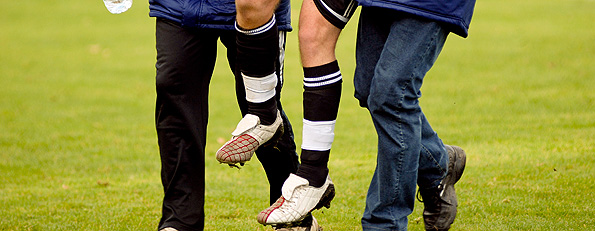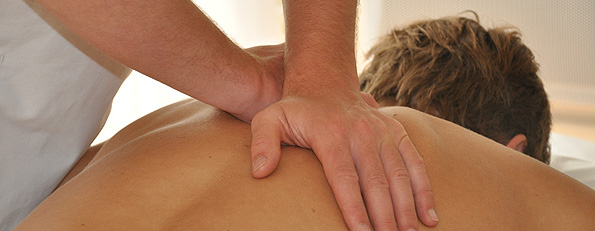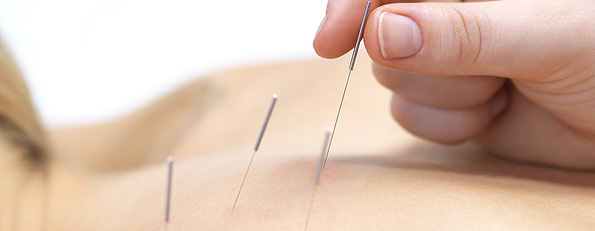Cranial
New Borns
It is a common belief that babies and children should have no structural stresses or strains in their bodies, because they are ‘so young’. The reality is very different.
Birth is one of the most stressful events of our lives. The baby is subjected to enormous forces, as the uterus pushes to expel the baby against the natural resistance of the birth canal. The baby has to turn and twist as it squeezes through the bony pelvis, on its short but highly stimulating and potentially stressful journey.
The baby’s head has the remarkable ability to absorb these stresses in a normal delivery. In order to reduce the size of the head, the soft bones overlap, bend and wrap as the baby descends. The baby’s chin is normally well tucked down towards its chest to reduce the presenting diameter of the head.
Many babies are born with odd shaped heads as a result. In the first few days, the head can usually be seen to gradually lose the extreme moulded shape, as the baby suckles, cries and yawns. However, this unmoulding process is often incomplete, especially if the birth has been difficult. As a result, the baby may have to live with some very uncomfortable stresses within its head and body.
For the treatment of:
- Crying babies
- Feeding difficulties
- Sickness, colic and wind
- Sleep disturbances
- Recurrent ear infections
- Ear infections
- Asthma
- Sinus and adenoidal problems
- Behaviour problems
- Learning difficulties
- Cerebral palsy and other types of brain damage and more
What effect does retained moulding have?
Some babies cope extremely well with even quite severe retained moulding and compression, and are contented and happy. For others it is a different story, and they can display a variety of problems.
Crying, irritable baby
Crying, fractious, irritable baby, needs to be rocked to sleep. Prefers being carried.
Reason
The baby may be uncomfortable, with a constant feeling of pressure in the head. This is made worse by the extra pressure on the head when lying down.
Feeding difficulties
The baby takes a long time to feed and one feed merges into the next. He/she may be a ‘windy’ feeder.
Reason
Feeding is difficult and tiring due to mechanical stresses through the head, face and throat. The nerves to the tongue may be irritated as they exit from the skull, which makes sucking difficult.
Sickness, colic and wind
Regurgitation of milk between feeds, bouts of prolonged crying due to colic and wind, often worse in the evening.
Reason
The nerve to the stomach is irritated as it exits from the base of the skull, which impairs digestion. The diaphragm may be stressed or distorted, which further compromises both digestion and the ability of the stomach to retain its contents.
Sleep disturbances
The baby sleeps for only short periods, and may sleep little in the day (or night), wakes to the slightest noise.
Reason
The tension on the bony and membranous casing of the skull keeps the baby’s nervous system in a persistently alert state.
As the child grows
As the child grows, the effects of retained moulding can lead to other problems. The following are the most common, but it is by no means an exhaustive list.
Infections
Retained moulding and birth stresses take their toll on the body’s reserves, and also deplete the immune system. This leaves children more vulnerable to all types of infection.
Ear Infections
Recurrent ear infections, gradually becoming more frequent, loss of hearing, leads to ‘glue ear’.
Reason
Retained birth compression within and around the bones of the ear impedes fluid drainage from the ear, causes poor development of air sinuses in the ear, and partial or complete blocking of the Eustachian tube. Infections never fully clear leaving a vulnerability to the next infecti
As a toddler
Mobility and play: The child may sit, crawl and walk early, seeking movement to relieve physical discomfort. The child may not become engrossed in play for any length of time, preferring to be on the move. This may contribute to poor concentration later on.
Sleep patterns often remain disturbed. They may be a light sleeper, often finding it difficult to drop off to sleep at night.
Behaviour is often at the difficult end of ‘normal’ toddler behaviour!
Teething may be particularly uncomfortable as the already stressed bony structure of the face resists the rapid changes necessary in the eruption of teeth.
Head banging or pulling at the head or hair is often an indicator of stresses within the head, and not simply a sign of frustration.
Childhood
A child who is physically uncomfortable may not complain of aches and pains. The stresses have probably been present since birth, and have become ‘normal’ for that child. They may be affected at a subtle level and display any or all of the following characteristics:
Behaviour may be volatile, in the same way that anyone who is feeling tense may overreact emotionally.
Illnesses. The child often has a depleted immune system and succumbs to many infections. Learning can be detrimentally affected by both a child feeling unwell and increased time lost from school. Retained birth moulding in the head restricts the development of the nasal sinuses and the ears. Such children are vulnerable to chronic ear infections and glue ear, with associated loss of hearing that can delay speech development and interfere with classroom learning. They are often habitual mouth breathers.
Physical signs. There may be asymmetries in the child’s posture, such as holding the head on one side, or one shoulder being higher than the other. It may be easier for the child to turn to one side than the other. This has implications on the best seating position within the classroom, to facilitate activities such as watching the teacher, copying from the blackboard etc.
Physical discomforts. The child may complain of headaches, growing pains, stomach aches or other physical aches and pains.
Clumsiness, poor balance. The child may fall a lot, often seeming to bump the same part of their body (such as the head!).
Handwriting is laborious and often untidy.
Fatigue
It is noticeable how similar these signs are to many of those classically associated with learning difficulties.
Gradual recognition of learning difficulties
Learning difficulties do not suddenly happen. Usually there are indications that a problem may be present from birth onwards. Early on the child may be able to overcome these difficulties, and seems to be reaching milestones. However, as demands are placed on him at school, it may become increasingly difficult for him to keep up with his peers. Eventually he falls behind, and a ‘learning difficulty’ is identified.
Other factors
There are other factors that can cause or aggravate learning difficulties, including impaired hearing or eyesight, and retained primitive reflexes.
Many behavioural disorders can be traced back to a difficult birth. Poor drainage.
The body has a great capacity to absorb trauma and adjust as needed. A baby’s body is soft and pliable, giving it the best chance to withstand the rigours of birth. Once the baby is born the membranes of the cranium must reshape themselves after being pushed and compressed.
Restrictions and misalignment of cranial bones can remain throughout life. The full impact may not be evident until many years later at school, as a learning disability or a behavioural condition. Many childhood difficulties can be attributed to restrictions in the Cranio Sacral system as a result of birth.
Sometimes the restrictions that lead to behavioural disorders can come from the baby being stuck in an awkward position in the womb or from umbilical shock, the trauma caused by premature cutting of the umbilical cord. Umbilical shock can also manifest as a fearful or fretful state in the child.
A difficult birth or a fall on the head may cause a restriction in the skull or sacrum area leading to sleeping difficulties. Babies who cry for abnormally long periods can often have ‘headaches’ they are unable to tell us about. Similarly, children who repeatedly bang their heads against walls are often trying to realign the bones in their cranium.
Compression of the temporal bones can result in poor drainage of blood from the head which can lead to dyslexia or learning difficulties. Tantrums, hyperactivity and behavioural disorders, can all result from cranial bone misalignment. Trauma from accidents and emotionally disruptive events, can all become locked in the body as patterns of restriction.
RESTRICTED DRAINAGE
Blood is pumped into the head by the heart but it relies on clear channels of drainage to leave the head freely. If the channels of drainage are restricted, the head is continually overfull. This leads to a build up of pressure in the head which, in turn, puts pressure on the brain. Many conditions can be alleviated by releasing the drainage channels for blood and cerebro spinal fluid from the head.
HEAD INJURIES
The after-effects of head injury can be diverse and subtle, including prolonged confusion, depression, personality changes or simply a feeling of being not quite right. These symptoms often have their origin in restriction patterns caused by the accident and can be helped greatly by Cranio Sacral treatment.
TANTRUMS, BEHAVIORAL DISORDERS
Often you will find that behavioural disorders relate back to birth and the need to release the birth trauma. Inter cranial pressure from a tight falx or tentorium causing compression on the brain can also be behind behavioural conditions.
With tantrums and behavioural disorders you need to consider the whole family, endeavour to read the parents and the whole family situation. The family situation can contribute enormously to tantrums or behavioural disorders. These kind of contributing factors make it difficult for you in treatment because in a way you are treating the whole family through the one child.
If mum and dad are going through an emotional turmoil and they look as though they are going to get divorced or they can’t stand each other this may be the underlying cause of the child’s tantrums or may keep the tantrums in place after any restrictions are released.
Using the diary and progress sheets will help you keep the parents awareness on the subtle changes that are occurring in their child, it will, by default bring a new awareness of themselves in relation to the behaviour of the child.
Learning Difficulties
Learning difficulties may be described as affecting any child who is not realising his/her full potential. This may include dyspraxia (DCD) to attention deficit hyperactivity disorder (ADHD), dyslexia and other learning difficulties, sensory integration disorder (SID), autism, Asperger’s syndrome and a variety of speech and language disorders.
Children with problems in these areas often have secondary problems, especially in posture and alignment of the body.Cranial osteopathy, with its gentle, fluid treatment, can improve structural alignment to improve posture, and reduce physical tension. This all helps a child to relax and improves concentration and the ability to learn.
Osteopaths recommend that children have regular checks to ensure they are meeting their developmental milestones, as any delay here may signal future learning difficulties.
Osteopathic treatment is aimed at improving the health and wellbeing of the child, not at the syndrome or learning difficulty, so that he or she can fulfil their potential.
ADHD, ADD, autism, dyslexia, dyspraxia, dysfunction and more fluffy labelling. These learning difficulties have titles that are so hard to get the meaing of that I’m having trouble reading them as an adult. If you are a parent with a child who has been given one of these labels, ask yourself if what the doctor has said really makes sense to you. From your own knowledge of your child, does it feel right? If not, you may consider handing the label back and finding a workable solution from amongst the range of alternative treatments on offer.




